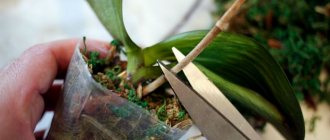A bright bouquet and indoor flowers will decorate any interior. And so that you learn to care for them not from your own mistakes, we asked florists Alena Gaidunkova, Irina Yudina And Elena Popova talk about basic recommendations for caring for flowers.
In this article we will tell you:
- How to care for indoor flowers?
- How to care for ficus?
- How to care for a cactus?
- How to care for violets?
- How to care for the flower of happiness?
- How to care for a money tree
- How to care for aloe?
- How to care for lilies?
- How to care for chrysanthemum
- How to care for gerberas
- How to care for tulips?
- How to care for cloves?
- Flower care cheat sheet
How to care for indoor flowers?
Basic care for indoor plants includes 5 steps:
- Watering. Use a watering can with a long spout. When watering, it should touch the edge of the pot. Pre-settle the water for at least 3 hours.
- Spraying. To create a warm shower, prepare a spray bottle and settled water.
- Trimming stems and removing dust from leaves. Wipe off dust from large leaves with a damp sponge, and from small and pubescent leaves with a brush. Trim stems with garden shears.
- Feeding . Choose liquid or dry fertilizers. The former are more often used for feeding indoor plants, since they provide the fastest feeding of the root system.
- Transfer. Replant a flower only if it is sick or has grown out of the pot. Plants do not like frequent replanting.
Floristry courses
online
Floristry courses
in Moscow
Floristry courses
In Petersburg
The most common diseases
There are many diseases that threaten a home greenhouse. Therefore, those who want to understand how to properly care for any house plants should get acquainted with the most common diseases.
“mosaic” is extremely dangerous . As the pathology develops, spots of lemon, white or pale light green shades appear on the leaves. They are formed due to the decomposition of the chloroplast. If you do nothing, the plant dies.
Atypical leaf curling indicates a dangerous viral disease. At first, wrinkles and swelling appear. After this, the sheet curls up and loses its natural shape.
Jaundice leads to necrosis, that is, the death of the crown. Initially it fades and withers. Later, brown spots appear, and the shoots lose their elasticity and break easily.
Powdery mildew is a common problem faced by growers specializing in violets, cyclamen and petunias. A characteristic symptom is a whitish coating that forms first on the back of the leaves, and then on the outside. It is easily eliminated, but then quickly appears again. Little by little, the affected areas become brownish.
Gray mold is a fungus. It spreads only to the stems. At an early stage, brown specks are formed there, covered with a coating similar to mold. As they develop, they turn into large spots. A diseased shoot stops supplying the leaves with water and they dry out.
Sooty fungus causes a black coating to form on the foliage. It prevents the crown from breathing and photosynthesising.
Important: there are two factors that contribute to the development of diseases - excessive watering and the use of non-sterile soil.
Red burn is another fungus. A sick flower becomes covered with scarlet spots. Later they turn black. The plant becomes deformed and loses its viability. The infection usually affects bulbous crops.
Scab or anthracnose . A characteristic feature here is spots in the center of the leaves. Along the edge they have a gray (less often yellow) outline. As the disease progresses, the flower dies.
Root rot is especially dangerous for young plants. Due to damage to the stems at the base, they stop receiving water and dry out.
Wilt . Infected specimens lose their healthy color - their leaves turn brown. Later, the areas between the veins die off. The infection spreads from the lower branches to the upper ones.
Late blight is an incurable disease. At the first stage, it affects the foliage - dead purple or brown areas are formed there. Later, the stem begins to rot - at this stage, branches sag.
How to care for ficus?
Ficus is one of the plants that do not like frequent rearrangements and transplants. It is important to grow it in the same place.
In summer, the comfortable temperature for the flower is 23-25 degrees Celsius, in winter 18-20 degrees Celsius.
Rules of care:
- Water your ficus deeply and regularly as the soil dries out.
- In summer, give the flower a warm shower.
- In winter, wipe off dust from the leaves.
- Feed the plant only in spring and summer, when the flower is gaining green mass. Organic or mineral fertilizers are suitable.
How to care for a cactus?
Cacti require a lot of sunlight. Place them on the south or east sides.
Winter is a dormant period for most cacti. Therefore, during the cold season, move it to a cool room and place it in the shade. In summer, take the plant out onto the balcony.
For watering, use water at room temperature. In summer and spring, water the cactus once every 2 days. In autumn, once every 5 days. And in winter, once every 1.5 weeks.
The warmer the room, the more often and more abundantly the cactus needs to be watered.
How to care for violets?
Violets should not be placed on the south side, where there is a lot of sunlight. The leaves will easily get burned and the plant will die.
The optimal temperature for a flower is 20 degrees Celsius. Violet is afraid of drafts and cold.
Rules of care:
- It is better to water the violet not from above, but through a tray, so as not to get on the rosette of the flower. The plant needs watering 1-2 times a week.
- You cannot spray violets.
- The plant should be fed only when it is in flower. Young violets need nitrogen fertilizers, and adult specimens need phosphorus-potassium fertilizers.
Pinching and trimming procedure
With the help of pruning, it is possible to form a beautiful crown and ensure a balance between the above-ground part and the roots. The best time for the procedure is spring. Additionally, it is carried out after transplanting the plant.
In the process, it is necessary to shorten old and bare branches so that a living bud remains at the tip, turned outward of the bush.
Important: instruments must be sterilized in any convenient way before use.
Some crops require radical pruning - it helps to rejuvenate decrepit hydrangeas, begonias, fuchsias, etc. Here, almost the entire above-ground part is removed - only short cuttings with no more than three buds are left.
During the pruning process, it is necessary to take into account which shoots produce flowers. If it’s the old ones, then the young ones clean it up, and vice versa.
Pinching is another method that helps to straighten crowns. Its essence is the elimination of only the upper tips of young branches. As a result, the plant begins to actively develop side shoots and becomes more magnificent.
The ideal time for pinching flower shoots is 1-2 weeks after transplantation. This period is enough for the plant to take root properly.
How to care for the flower of happiness?
Some of the most frequently purchased flowers are Spathiphyllum and Anthurium . People call them female and male happiness.
Spathiphyllum grows in nature along rivers. Create a humid and cool climate for it. The temperature should not exceed 22 degrees Celsius.
The flower does not tolerate sun or strong shade. The eastern or western side is optimal for it.
Rules of care:
- Spray 3-4 times a day.
- Water with settled, non-chlorinated water at room temperature.
- Feed with special fertilizers. In summer every 2 weeks, in winter every 3-4 weeks.
For the anthurium , choose any place; it does not have to be placed on the windowsill. He will like even the high temperature in our apartments in winter. But at the same time it is necessary to create sufficient humidity for the plant.
Rules of care:
- Spray only the leaves twice a day. No moisture should get on the inflorescence.
- Water once every 4 days exclusively with settled water.
- Once a month, fertilize the anthurium with organic, mineral or complex compounds.
How to care for a money tree
The money tree is a plant of the Crassulaceae family. Its leaves look like coins.
Caring for a money tree is easy. The main thing for him is moderate watering, periodic feeding and crown formation.
Trim mature plants to create a decorative appearance. There are several options:
- To obtain a plant with a thick stem, remove all shoots and lower leaves.
- For a classic tree, trim off any excess side branches.
- To get a lush shrub, get rid of the side leaves, but do not remove the shoots.
The trunk is always cut above the fourth pair of leaves.
Rules of care:
- Crassula does not like abundant watering. In summer, water the plant once a week, in winter once every 2 weeks.
- The flower does not require regular spraying. It is enough to wipe the leaves with a damp sponge.
- In summer, feed the plant once every 2 weeks, in other seasons once a month. Liquid fertilizers for cacti or succulents are suitable.
Plant compatibility table
| № | Conditions of detention | Plants |
| 1 | Grows slowly, likes partial shade, flowering, deciduous | Cacti, begonias, alocasia, calligraphy violets, monstera |
| 2 | Light-loving, love space | Orchid, aloe, vanda, monstera, date, abutilon, ficus, geranium |
| 3 | Diffuse color, spraying, humid air | Tradescantia, dracaena, bamboo, pilea, hedera |
| 4 | Artificial supplementary lighting in winter, abundant watering, fertilizing | Home rose, indoor jasmine, eustoma |
| 5 | Unpretentious, dry air is suitable, abundant watering without stagnation, partial shade and shadow | Eucharis, spathiphyllum, saintpaulia, stromantha, money tree |
How to care for aloe?
Aloe is a light-loving plant. Feel free to place it on a south window and do not hide it from the sun's rays.
In summer, take the plant out into the fresh air. In winter, the flower has a rest period. During this time, keep it in a cool place.
Rules of care:
- Water the plant immediately after the top layer of soil has completely dried. Avoid getting moisture into the leaf rosette, otherwise the plant may rot.
- The plant does not need to create a special microclimate. There is no need to spray it.
- Feed the flower monthly from spring to autumn. Any mineral fertilizers will do.
North window plants
A north window in an apartment with central heating is not a bad option for placing shade-loving plants. In summer it is cool, there is enough light for exotics that are afraid of direct sunlight. A sign of shade tolerance is wide leaves with a smooth surface. Begonias, guzmanias, and saintpaulias bloom brightly on a shady windowsill.
Shade-tolerant plants include leafy and flowering plants:
- dark leaf dracaena,
- aspidistra,
- maidenhair,
- eucharis,
- spathiphyllum.
In nature, these apartment dwellers developed in a warm climate under the shade of tall trees. Therefore, the absence of sunlight does not affect the decorative properties.
How to care for lilies?
Lily can stay at home for up to 2 weeks. Prepare a vase for her with settled water and add an antiseptic. An aspirin tablet, activated carbon or a few crystals of potassium permanganate will do. This will prevent the flower from rotting.
Change the water in the vase daily, rinse the stems and leaves under running water.
Remove the stamens from blooming flowers, then they will bloom much longer. A bouquet of lilies will be best preserved indoors at room temperature, away from sunlight.
How to care for chrysanthemum
Start caring for cut chrysanthemums by cutting the stem with a knife along an oblique line. Remove the lower leaves.
Stagnation of water should not be allowed. Change it at least once every 2 days.
When changing the water, add one of these products:
- A specialized drug that is sold in florist shops. For example, "Bud".
- Aspirin. For 2 liters of water, 1 tablet is enough.
- Salt. 2 teaspoons per 2 liters of water.
- Granulated sugar. 2 tablespoons per 2 liters of water.
Chrysanthemums love cool rooms with temperatures up to 20 degrees Celsius and do not tolerate direct sunlight.
How to care for gerberas
Cut gerberas last from 7 to 14 days with proper care.
First, distribute the bouquet. Be careful, the flowers have fragile and thin stems. Their tips should not touch the bottom of the vase.
Cut the stem along an oblique line with a sharp knife, this will increase the supply of moisture to the plant. The water in the vase should cover the stems by 4 cm. When it evaporates, it is necessary to add liquid.
Clean and trim the stems every 3 days. To do this, rinse the ends of mucus under running water.
To disinfect, add a few granules of citric acid or an activated carbon tablet to the water.
About soil moisture
House flowers, like their relatives living in open ground, do not tolerate a lack of moisture, but even worse - its excess. Therefore, it is important to maintain an optimal level of water content in the substrate.
For the vast majority of flowers, the acceptable figure is 60-70% of the moisture capacity of the soil mixture. The latter is defined as follows:
- weigh the empty pot and then fill it three-quarters full with dry soil and repeat the procedure;
- place the container in the water so that its level coincides with the top edge of the ground;
- when the liquid completely saturates the soil, remove the pot and let the excess drain;
- weigh it again;
- subtract the last indicator from the first and get the desired value.
How to care for cloves?
For a bouquet of carnations, choose a vase with a wide neck so that the flowers are not pressed tightly against each other. The water level should be 10-15 cm.
Sweet water will help extend the life of the bouquet. Add 70 g of sugar to 1 liter of liquid and stir thoroughly.
Place the flowers in a shaded area and spray them daily.
If you want to learn not only how to properly care for flowers, but also how to create flower arrangements, sign up for a florist course. They are suitable for both those who love to create beauty at home and those who dream of mastering a sought-after profession.
To choose a teacher, look at his portfolio with ready-made compositions. The work must be done carefully and you like it.
In floristry courses you will learn:
- basics of flower arrangement;
- modern techniques for composing a bouquet;
- product packaging;
- storage of fresh flowers.
Choose courses that include the cost of flowers, packaging, frames and decorative elements to create displays. It will be cheaper than buying practice materials yourself.
At the end of the course, you will be given a certificate confirming that you are a young and promising florist.
Reviews
Natalia, 25 years old
I really love being surrounded by living plants. Renting at home is much more comfortable. But as soon as I think about the planned fertilization and replanting, panic begins. I am very glad that I can only enjoy the beauty of indoor plants, and entrust their care to professionals from. All manipulations with my green “friends” are performed simply masterfully – as quickly and efficiently as possible!
Evgeniya, 43 years old
Just recently, all the finishing work in the house was completed, and that long-awaited moment came when I was able to direct all my efforts to improving the yard. I thought that, armed with advice from the Internet, I could quickly cope with this task. It turned out that landscaping requires deep knowledge and specialized equipment. I didn’t dare to ruin my dream of an ideal courtyard, so I started creating it. Thank you very much for the work done!
Tatyana, 58 years old
I have a fairly large house and every room is surrounded by decorative flowers. Every year it becomes more and more difficult to care for them, especially since my collection is constantly replenished with new specimens. So that many years of efforts would not be in vain, I decided to ask for help. A friend recommended visiting the website serissa.ru. I was pleasantly surprised by the variety of the company's services and its affordable prices. Now I don't have to worry about my flowers losing their attractiveness.
You can find a complete list of reviews in the reviews section.
Flower care cheat sheet
The main thing is to provide the flowers with the proper microclimate.
Find out the most complete information about your plant:
- where to put it;
- how often to water and spray;
- when and what to feed.
Cut plants will last longer if they change the water daily, trim the stems and feed them with a mixture for bouquets, which are sold in every flower shop.
Follow the rules of care, and then the flowers will delight you for many years.
Do your indoor flowers survive? What products do you use to extend the life of your bouquet? Write in the comments about your knowledge and experience. Repost so you don’t lose the article and read it over the weekend.
This training may be right for you:
- 10 Best Online Floristry Training Courses
- Best Floristry Courses in Moscow from 1,300 Rubles
- Best Floristry Courses in St. Petersburg











